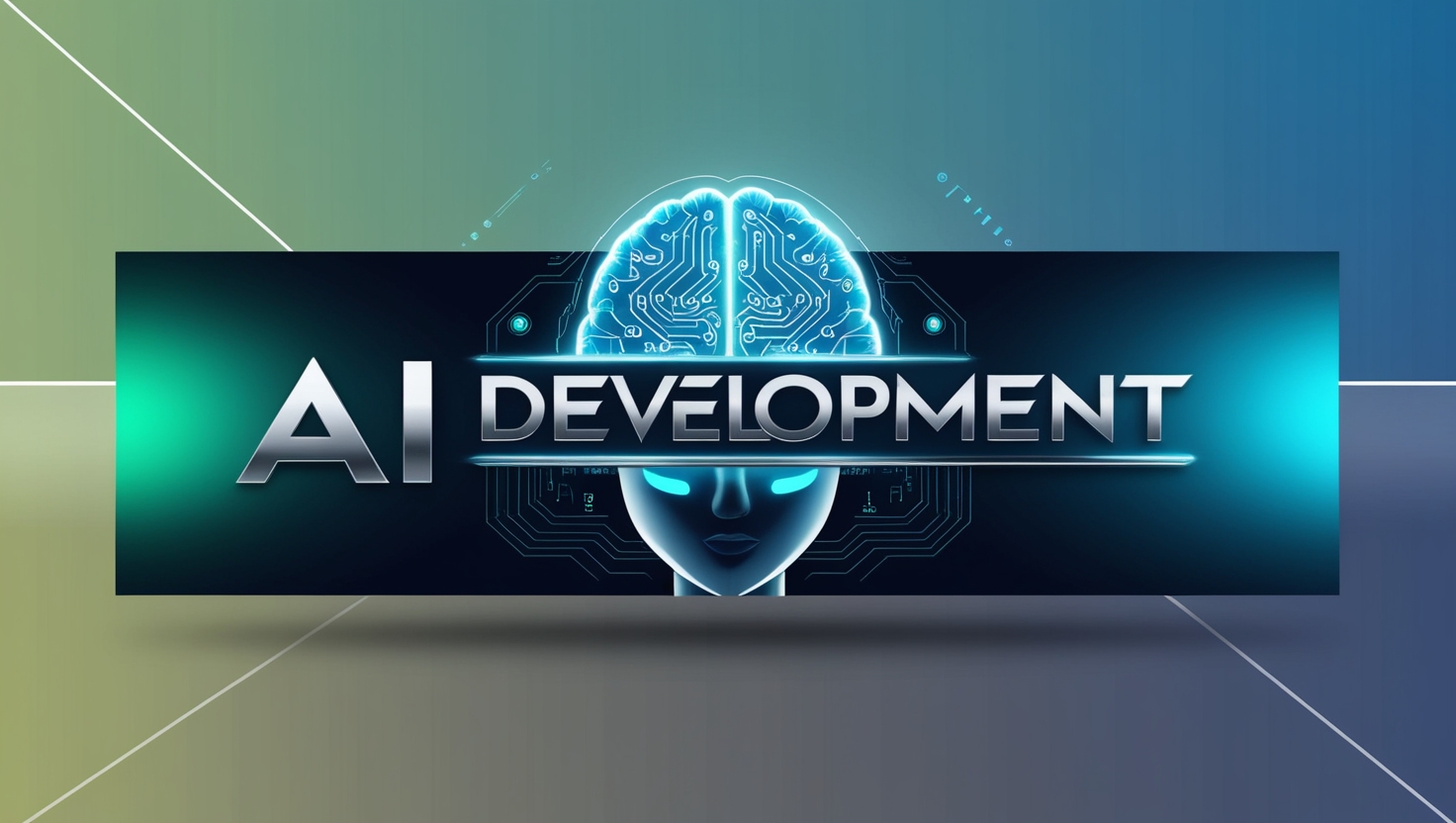 High-Converting Funnels – From Ad Click to Final Sale!
High-Converting Funnels – From Ad Click to Final Sale!
How To Build Custom AI Software Development Solutions for Specific Business Problems?
Written by Daniel Jack » Updated on: June 17th, 2025

Artificial intelligence (AI) is transforming industries by automating tasks, improving decision-making, and creating innovative products. While many businesses see the value in AI, the real challenge lies in developing AI software solutions that effectively address specific business problems. Custom AI development can empower businesses to solve challenges, boost efficiency, and stay ahead of competitors.
In this blog, we will focus on how to build custom AI software that solves distinct business problems. We’ll cover key steps and provide insights into structuring the development process for effective solutions.
1. Identifying the Business Problem
The first step in building custom AI software is to clearly define the problem you want to solve. AI is versatile, capable of addressing a wide range of challenges, but for the software to be effective, it needs to be tailored to a specific issue.
Ask yourself the following questions:
What operational or strategic issue needs attention?
Is the problem related to data analysis, automation, or decision support?
What are the pain points of current systems or processes?
For example, if a company struggles with customer service response times, AI can be used to automate chatbots or assist agents with customer inquiries. If a business faces issues with predicting market trends, AI can offer predictive analytics to guide decision-making.
Be sure to define the problem in as much detail as possible. The clearer the problem definition, the better the AI solution will address it.
2. Setting Clear Objectives
Once the problem is identified, the next step is to set clear objectives for the AI solution. These objectives will provide direction for the software development process and ensure that the AI system delivers value.
Consider the following:
What are the measurable outcomes you want to achieve with the AI solution?
What will success look like after the AI is implemented?
How will you assess the AI’s effectiveness in solving the problem?
For instance, in an AI-driven recommendation system for e-commerce, the objective might be to increase sales by offering customers personalized product suggestions based on their browsing behavior. The goal is to track sales growth and customer satisfaction as key performance indicators (KPIs).
Clearly defined objectives will guide the AI development process and ensure the solution meets the business’s needs.
3. Collecting and Preparing Data
AI solutions rely on data to function effectively. The quality and quantity of the data you feed into your system directly impact the performance of the AI. Therefore, data collection and preparation are essential components of custom AI development.
Consider the following steps when working with data:
Identify Data Sources: Determine where you will source the data required for training the AI system. This could be from internal databases, third-party providers, or user interactions.
Clean and Preprocess Data: Raw data is often incomplete, inconsistent, or noisy. To build an effective AI solution, you must clean and preprocess the data. This includes handling missing values, eliminating duplicates, and standardizing formats.
Data Labeling (if applicable): For supervised learning models, it’s important to label data accurately. For instance, in image classification tasks, labeling images with the correct category ensures that the AI learns the correct patterns.
Feature Engineering: Extract relevant features from the raw data to make it more useful for AI algorithms. Feature engineering involves selecting the most important variables that will help the AI make better predictions.
The more accurate and relevant the data is, the better your AI system will perform. Investing time in data collection and preparation pays off in the long run.
4. Selecting the Right AI Technology
There are many different AI technologies, each suited for solving specific types of problems. Selecting the right technology is crucial for building an effective AI solution.
Some common AI technologies include:
Machine Learning (ML): Ideal for tasks like pattern recognition, predictions, and classification. ML models learn from data and improve over time as they are exposed to more information.
Natural Language Processing (NLP): Used to process and understand human language. NLP is valuable for tasks like chatbots, text analysis, and sentiment analysis.
Computer Vision: Helps machines interpret and process visual information from images or video. It’s essential for tasks like facial recognition, object detection, and image classification.
Reinforcement Learning: Suitable for decision-making tasks that involve learning from interactions with the environment. This method is often applied in areas like game development or robotic automation.
When selecting the right AI technology, consider the nature of the problem, the type of data available, and the complexity of the task at hand.
5. Developing the AI Model
With the problem clearly defined, objectives set, data prepared, and technology selected, the next step is to start developing the AI model. The development process typically involves training a model on the collected data.
Steps in model development include:
Choosing an Algorithm: Depending on the AI technology, you will need to select the appropriate algorithm. For example, if you're working with machine learning, you might choose algorithms such as decision trees, support vector machines, or neural networks.
Training the Model: During training, the model learns patterns from the data. The process involves feeding the prepared data into the algorithm, adjusting the model’s parameters, and refining its predictions over time.
Evaluation: After training the model, it’s important to evaluate its performance. This is typically done using a validation dataset, a separate subset of data that wasn’t used during training. Evaluation metrics such as accuracy, precision, recall, or F1 score are used to assess how well the model performs.
Iteration: AI development is often an iterative process. After evaluating the model’s performance, you may need to fine-tune it, adjust parameters, or use different algorithms to improve results.
The goal is to develop a model that performs well on the given task and solves the business problem efficiently.
6. Deploying the AI Solution
Once the AI model is trained and evaluated, the next step is to deploy it into a production environment. This is where the AI system starts working in real-world conditions, solving the business problem.
Deployment involves:
Integration: Integrate the AI model with existing business systems, processes, or software platforms. For example, an AI-powered customer service chatbot must be connected to the company’s communication channels, such as the website or mobile app.
Scalability: Ensure the AI solution can handle increasing amounts of data and usage. If the business grows or if more data is collected over time, the AI system should scale accordingly without degrading performance.
Monitoring: Post-deployment monitoring is essential to track the performance of the AI system. This involves checking the accuracy of predictions, observing user feedback, and detecting any errors or issues that might arise.
Maintenance: AI systems require ongoing maintenance to ensure they remain effective. As new data becomes available or business needs change, the system may need updates or retraining to adapt.
Deployment is a crucial stage where AI systems go from concept to real-world application, impacting business operations.
7. Ensuring Ethical AI Use
While AI has the potential to solve many problems, it’s essential to ensure that the AI solution is used ethically. Ethical considerations must be part of the AI development process to prevent unintended consequences and to build trust with users.
Some key ethical considerations include:
Bias in Data: AI models can inherit biases present in the data they’re trained on. This can lead to unfair outcomes or discrimination. Regularly auditing the data and model for bias is necessary to avoid these issues.
Transparency: Make the decision-making process of the AI system transparent to users and stakeholders. This helps build trust and ensures that users understand how AI-driven decisions are made.
Privacy: AI solutions must respect user privacy. Ensure that sensitive data is protected and that the AI system complies with privacy laws and regulations such as GDPR.
Building AI solutions that are ethical and transparent is critical to long-term success and maintaining customer trust.
8. Continuous Improvement and Scaling
Once the AI system is deployed, it is not the end of the process. As businesses evolve and data changes, AI systems must be continuously improved and scaled.
Consider the following to ensure long-term success:
Model Retraining: Over time, the performance of an AI model may degrade as new data becomes available. Retraining the model periodically with fresh data helps maintain accuracy.
Feedback Loops: Collect feedback from users and stakeholders to identify areas for improvement. Use this feedback to enhance the AI system and make it more effective.
Scalability: As the business grows, ensure that the AI solution can handle increased demand. Whether this involves adding more processing power, optimizing code, or improving algorithms, scaling is a vital part of ensuring the AI system continues to perform well as the business expands.
Custom AI development is a continuous journey. The key is to stay adaptable and make improvements based on real-world usage and evolving business needs.
Conclusion
Building custom AI software development solutions for specific business problems requires a methodical approach that starts with a clear understanding of the problem and ends with deployment and scaling. By following a structured process, businesses can create AI solutions that provide measurable benefits and solve complex issues.
Success in AI development requires careful planning, data handling, technology selection, model building, and ongoing maintenance. Businesses should keep in mind that AI is not a one-time fix but an evolving tool that must be nurtured and improved to maintain its effectiveness in solving business challenges.
Note: IndiBlogHub features both user-submitted and editorial content. We do not verify third-party contributions. Read our Disclaimer and Privacy Policyfor details.
Copyright © 2019-2025 IndiBlogHub.com. All rights reserved. Hosted on DigitalOcean for fast, reliable performance.













